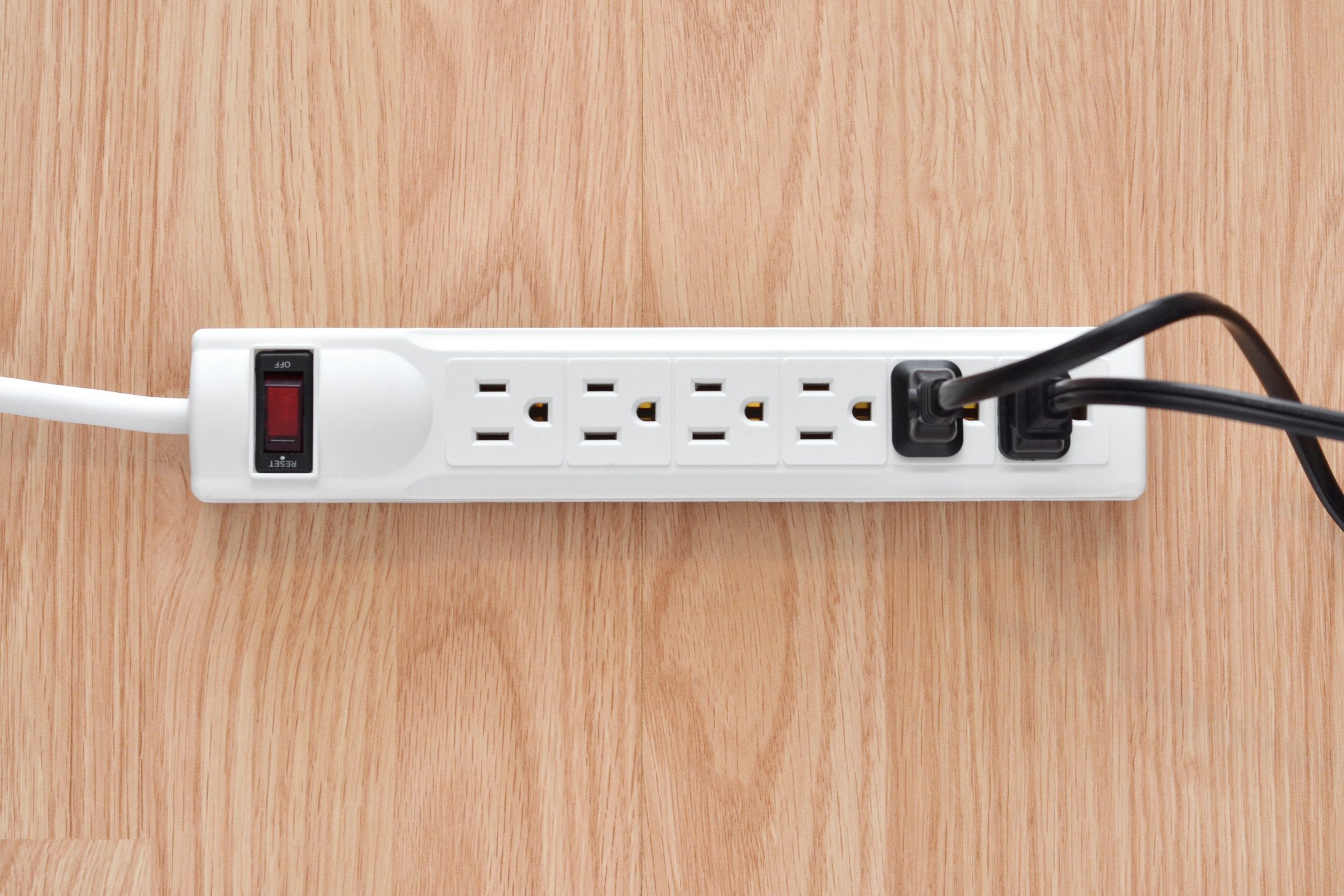Our lives depend on electricity, and we never seem to have enough places to plug in. Use power strips safely to reduce your risk of fire.

Things You Should Never Do With Power Strips

Today’s high-tech living means it’s sometimes hard to find enough receptacles (colloquially called outlets) to plug in all our stuff. Enter the power strip. Who among us doesn’t have two or three of these around the house? Under the desk, behind the entertainment center, anywhere we need a few extra sockets for our never-ending array of gadgets.
I’m an electrician, and I have more power strips than I care to admit. Why would it be a problem? Power strips can be dangerous, especially if you overload them or use them for the wrong things. They’re also a fire risk, so it’s important to use them with care and sparingly. When I moved into my current home, I found a melted power strip in the garage, and investigating whether it had caused more damage than was visible added stress and hassle when all I wanted to do was relax and put my feet up.
If you’re wondering when you can use a power strip and all the things you should never do with one, read on.
On This Page
What is a Power Strip?
A power strip is a bank of multiple receptacles (aka outlets) that extends an existing circuit, giving you the flexibility to plug in more devices than you could at a regular wall outlet.
Power strips come in a few variations, but the ones homeowners typically see are a portable block of receptacles attached to a sturdy cord and plug, with or without an on/off switch. Another name for a power strip is “relocatable power tap.”
Power Strip vs. Surge Protector
Power strips bring electricity out from the wall to a more convenient location so you can plug in multiple things. That’s all they do. Think of them like an extension cord with receptacles on the end.
Surge protectors look like power strips, but they have added protection against lightning strikes and voltage spikes, which can seriously fry your sensitive electronics. It’s easy to confuse the two, so check the label before shelling out your hard-earned cash.
When Should You Use a Power Strip?
Use a power strip when you have more plugs than you have receptacles, but be careful. Just because you have spots for multiple plugs doesn’t mean you should use every single one. Power strips and surge protectors don’t add capacity to your circuit. If your circuit breaker says 15 amps, adding a power strip doesn’t change that.
Because they’re easy to overload, power strips are best for low-power things like lamps, desk fans, battery chargers and other small devices.
Use surge protectors to plug in computers, televisions, game consoles and other sensitive devices. Verify the loads of your devices and what’s already powered by the circuit before loading up a power strip or surge protector. Check the breaker to determine the size of your circuit, and buy a power strip with the same or larger rating.
Things You Should Never Do With a Power Strip
To lessen your fire risk when using power strips and surge protectors, follow these common-sense rules:
- Never use power strips or surge protectors to plug in high-amp appliances or motors. Microwaves, air fryers, space heaters, washers and dryers, air conditioners, sump pumps and other major household equipment must be directly plugged into the wall or hard-wired for safety. Even the best power strips can overheat, and they’re not designed to handle the high startup and running currents of motors and appliances.
- Just like an extension cord, you should never cover your power strip with rugs or carpeting or stuff it under a dusty old couch. Electricity generates heat, and combustibles sitting right on top of the power strip are just asking for trouble. Never “daisy chain” power strips by plugging one strip or surge protector into another one. The likelihood of overloading your circuit skyrockets when you have so many available receptacles. Call an electrician if you need power where you don’t have it.
Power Strip Safety
Ready to use a power strip or surge protector? Do it safely by following these tips.
- Buy listed power strips only. All power strips and surge protectors must be listed, aka certified, by a reputable listing agency like Underwriters Laboratories. Listing means that the manufacturer has followed industry-recognized safety standards in manufacturing processes.
- Use them indoors. Unless they’re specifically made for outdoor use, keep power strips inside.
- Inspect them periodically. Power strips don’t need much babysitting, but check them for signs of trouble, like excess heat or melted plastic. If you have a surge protector, the protection doesn’t last forever. Look for an indicator light to know when it’s time to replace it.
- Choose one with an internal circuit breaker. If something goes wrong, you’ll want the extra protection.
- Limit usage. Having a single power strip or surge protector under a desk or in an entertainment center is fine, but don’t get carried away. If you find yourself using them all over the house, or you don’t have enough capacity even with the power strip, call a licensed electrician and find a permanent solution.




















